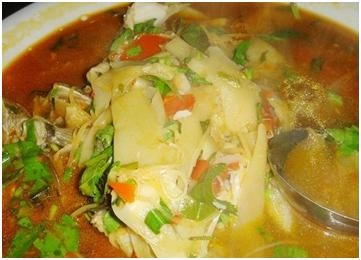COMP9414代寫、Python語言編程代做
時間:2024-07-06 來源: 作者: 我要糾錯
COMP9414 24T2
Artificial Intelligence
Assignment 2 - Reinforcement Learning
Due: Week 9, Wednesday, 26 July 2024, 11:55 PM.
1 Problem context
Taxi Navigation with Reinforcement Learning: In this assignment,
you are asked to implement Q-learning and SARSA methods for a taxi nav-
igation problem. To run your experiments and test your code, you should
make use of the Gym library1, an open-source Python library for developing
and comparing reinforcement learning algorithms. You can install Gym on
your computer simply by using the following command in your command
prompt:
pip i n s t a l l gym
In the taxi navigation problem, there are four designated locations in the
grid world indicated by R(ed), G(reen), Y(ellow), and B(lue). When the
episode starts, one taxi starts off at a random square and the passenger is
at a random location (one of the four specified locations). The taxi drives
to the passenger’s location, picks up the passenger, drives to the passenger’s
destination (another one of the four specified locations), and then drops off
the passenger. Once the passenger is dropped off, the episode ends. To show
the taxi grid world environment, you can use the following code:
env = gym .make(”Taxi?v3 ” , render mode=”ans i ” ) . env
s t a t e = env . r e s e t ( )
rendered env = env . render ( )
p r i n t ( rendered env )
In order to render the environment, there are three modes known as
“human”, “rgb array, and “ansi”. The “human” mode visualizes the envi-
ronment in a way suitable for human viewing, and the output is a graphical
window that displays the current state of the environment (see Fig. 1). The
“rgb array” mode provides the environment’s state as an RGB image, and
the output is a numpy array representing the RGB image of the environment.
The “ansi” mode provides a text-based representation of the environment’s
state, and the output is a string that represents the current state of the
environment using ASCII characters (see Fig. 2).
Figure 1: “human” mode presentation for the taxi navigation problem in
Gym library.
You are free to choose the presentation mode between “human” and
“ansi”, but for simplicity, we recommend “ansi” mode. Based on the given
description, there are six discrete deterministic actions that are presented in
Table 1.
For this assignment, you need to implement the Q-learning and SARSA
algorithms for the taxi navigation environment. The main objective for this
assignment is for the agent (taxi) to learn how to navigate the gird-world
and drive the passenger with the minimum possible steps. To accomplish
the learning task, you should empirically determine hyperparameters, e.g.,
the learning rate α, exploration parameters (such as ? or T ), and discount
factor γ for your algorithm. Your agent should be penalized -1 per step it
2
Figure 2: “ansi” mode presentation for the taxi navigation problem in Gym
library. Gold represents the taxi location, blue is the pickup location, and
purple is the drop-off location.
Table 1: Six possible actions in the taxi navigation environment.
Action Number of the action
Move South 0
Move North 1
Move East 2
Move West 3
Pickup Passenger 4
Drop off Passenger 5
takes, receive a +20 reward for delivering the passenger, and incur a -10
penalty for executing “pickup” and “drop-off” actions illegally. You should
try different exploration parameters to find the best value for exploration
and exploitation balance.
As an outcome, you should plot the accumulated reward per episode and
the number of steps taken by the agent in each episode for at least 1000
learning episodes for both the Q-learning and SARSA algorithms. Examples
of these two plots are shown in Figures 3–6. Please note that the provided
plots are just examples and, therefore, your plots will not be exactly like the
provided ones, as the learning parameters will differ for your algorithm.
After training your algorithm, you should save your Q-values. Based on
your saved Q-table, your algorithms will be tested on at least 100 random
grid-world scenarios with the same characteristics as the taxi environment for
both the Q-learning and SARSA algorithms using the greedy action selection
3
Figure 3: Q-learning reward. Figure 4: Q-learning steps.
Figure 5: SARSA reward. Figure 6: SARSA steps.
method. Therefore, your Q-table will not be updated during testing for the
new steps.
Your code should be able to visualize the trained agent for both the Q-
learning and SARSA algorithms. This means you should render the “Taxi-
v3” environment (you can use the “ansi” mode) and run your trained agent
from a random position. You should present the steps your agent is taking
and how the reward changes from one state to another. An example of the
visualized agent is shown in Fig. 7, where only the first six steps of the taxi
are displayed.
2 Testing and discussing your code
As part of the assignment evaluation, your code will be tested by tutors
along with you in a discussion carried out in the tutorial session in week 10.
The assignment has a total of 25 marks. The discussion is mandatory and,
therefore, we will not mark any assignment not discussed with tutors.
Before your discussion session, you should prepare the necessary code for
this purpose by loading your Q-table and the “Taxi-v3” environment. You
should be able to calculate the average number of steps per episode and the
4
Figure 7: The first six steps of a trained agent (taxi) based on Q-learning
algorithm.
average accumulated reward (for a maximum of 100 steps for each episode)
for the test episodes (using the greedy action selection method).
You are expected to propose and build your algorithms for the taxi nav-
igation task. You will receive marks for each of these subsections as shown
in Table 2. Except for what has been mentioned in the previous section, it is
fine if you want to include any other outcome to highlight particular aspects
when testing and discussing your code with your tutor.
For both Q-learning and SARSA algorithms, your tutor will consider the
average accumulated reward and the average taken steps for the test episodes
in the environment for a maximum of 100 steps for each episode. For your Q-
learning algorithm, the agent should perform at most 13 steps per episode on
average and obtain a minimum of 7 average accumulated reward. Numbers
worse than that will result in a score of 0 marks for that specific section.
For your SARSA algorithm, the agent should perform at most 15 steps per
episode on average and obtain a minimum of 5 average accumulated reward.
Numbers worse than that will result in a score of 0 marks for that specific
section.
Finally, you will receive 1 mark for code readability for each task, and
your tutor will also give you a maximum of 5 marks for each task depending
on the level of code understanding as follows: 5. Outstanding, 4. Great,
3. Fair, 2. Low, 1. Deficient, 0. No answer.
5
Table 2: Marks for each task.
Task Marks
Results obtained from agent learning
Accumulated rewards and steps per episode plots for Q-learning
algorithm.
2 marks
Accumulated rewards and steps per episode plots for SARSA
algorithm.
2 marks
Results obtained from testing the trained agent
Average accumulated rewards and average steps per episode for
Q-learning algorithm.
2.5 marks
Average accumulated rewards and average steps per episode for
SARSA algorithm.
2.5 marks
Visualizing the trained agent for Q-learning algorithm. 2 marks
Visualizing the trained agent for SARSA algorithm. 2 marks
Code understanding and discussion
Code readability for Q-learning algorithm 1 mark
Code readability for SARSA algorithm 1 mark
Code understanding and discussion for Q-learning algorithm 5 mark
Code understanding and discussion for SARSA algorithm 5 mark
Total marks 25 marks
3 Submitting your assignment
The assignment must be done individually. You must submit your assignment
solution by Moodle. This will consist of a single .zip file, including three
files, the .ipynb Jupyter code, and your saved Q-tables for Q-learning and
SARSA (you can choose the format for the Q-tables). Remember your files
with your Q-tables will be called during your discussion session to run the
test episodes. Therefore, you should also provide a script in your Python
code at submission to perform these tests. Additionally, your code should
include short text descriptions to help markers better understand your code.
Please be mindful that providing clean and easy-to-read code is a part of
your assignment.
Please indicate your full name and your zID at the top of the file as a
comment. You can submit as many times as you like before the deadline –
later submissions overwrite earlier ones. After submitting your file a good
6
practice is to take a screenshot of it for future reference.
Late submission penalty: UNSW has a standard late submission
penalty of 5% per day from your mark, capped at five days from the as-
sessment deadline, after that students cannot submit the assignment.
4 Deadline and questions
Deadline: Week 9, Wednesday 24 of July 2024, 11:55pm. Please use the
forum on Moodle to ask questions related to the project. We will prioritise
questions asked in the forum. However, you should not share your code to
avoid making it public and possible plagiarism. If that’s the case, use the
course email cs9414@cse.unsw.edu.au as alternative.
Although we try to answer questions as quickly as possible, we might take
up to 1 or 2 business days to reply, therefore, last-moment questions might
not be answered timely.
For any questions regarding the discussion sessions, please contact directly
your tutor. You can have access to your tutor email address through Table
3.
5 Plagiarism policy
Your program must be entirely your own work. Plagiarism detection software
might be used to compare submissions pairwise (including submissions for
any similar projects from previous years) and serious penalties will be applied,
particularly in the case of repeat offences.
Do not copy from others. Do not allow anyone to see your code.
Please refer to the UNSW Policy on Academic Honesty and Plagiarism if you
require further clarification on this matter.
請加QQ:99515681 郵箱:99515681@qq.com WX:codinghelp
標簽:
掃一掃在手機打開當(dāng)前頁
注:本網(wǎng)條致力提供真實有用信息,所轉(zhuǎn)載的內(nèi)容,其版權(quán)均由原作者和資料提供方所擁有!若有任何不適煩請聯(lián)系我們,將會在24小時內(nèi)刪除。
無相關(guān)信息 昆明生活資訊
推薦信息
相關(guān)文章
無相關(guān)信息















